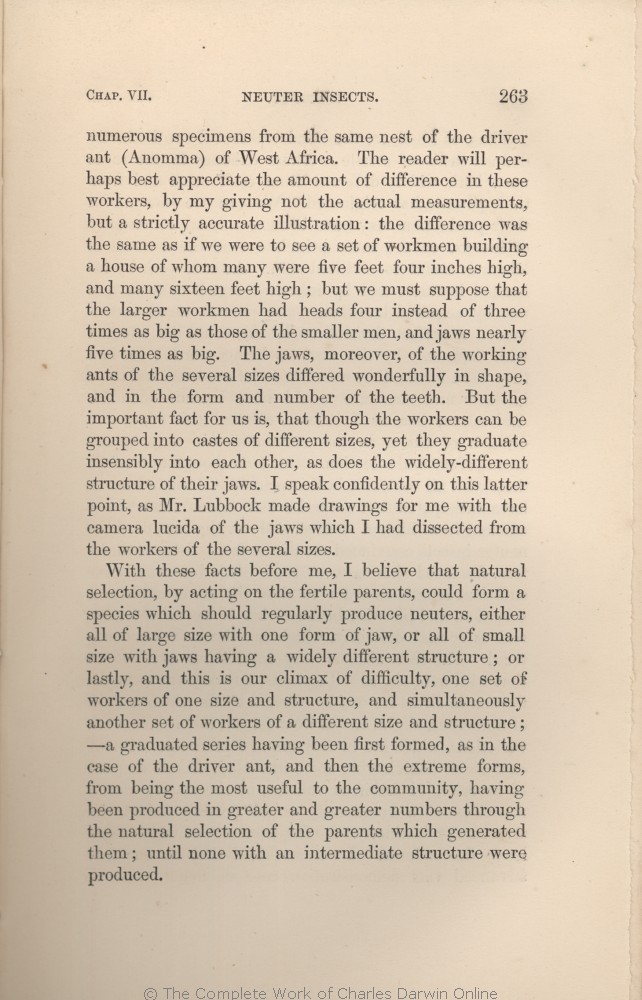numerous specimens from the same nest of the driver ant (Anomma) of West Africa. The reader will perhaps best appreciate the amount of difference in these workers, by my giving not the actual measurements, but a strictly accurate illustration: the difference was the same as if we were to see a set of workmen building a
house | house 1859 1860 1861 | | house, 1866 1869 1872 |
| suppose 1859 1860 1861 1866 1869 |
| in addition suppose 1872 |
| that 1859 1860 1861 | | that, 1866 1869 1872 |
| Mr. 1859 1860 1861 | | Sir J. 1866 1869 1872 |
| me 1859 1860 1861 | | me, 1866 1869 1872 |
| lucida 1859 1860 1861 | | lucida, 1866 1869 1872 |
| had 1859 1860 1861 | had 1866 1869 1872 |
| 1 blocks not present in 1859 1860 1861; present in 1866 1869 1872 | | Mr. Bates, in his most
interesting 'Naturalist on the Amazons,' has described some
analogous cases.
|
|
|
With these facts before me, I believe that natural selection, by acting on the fertile
parents, | parents, 1859 1860 1861 1866 |
| ants or parents, 1869 1872 |
| either 1859 1860 1861 1866 1869 | either 1872 |
| jaws having a 1859 1860 1861 1866 1869 |
| OMIT 1872 |
| structure; 1859 1860 1861 1866 1869 | | jaws; 1872 |
| our 1859 1860 1861 1866 | | the 1869 1872 |
| simultaneously 1859 1860 1861 1866 1872 |
| at the same time 1869 |
| been first 1859 1860 1861 1866 | | first been 1869 1872 |
| forms, 1859 1860 1861 | | forms 1866 1869 1872 |
| from being the most useful to the community, 1859 1860 1861 |
| OMIT 1866 1869 1872 |
| in greater and greater numbers 1859 1860 1861 |
| in greater and greater numbers, 1869 1872 |
| OMIT 1866 |
| natural selection 1859 1860 1861 1866 | | survival 1869 1872 |
| them; 1859 1860 1861 | | them, 1866 1869 1872 |
| until 1859 1860 1861 1869 1872 |
| in greater and greater numbers, until 1866 |
|









